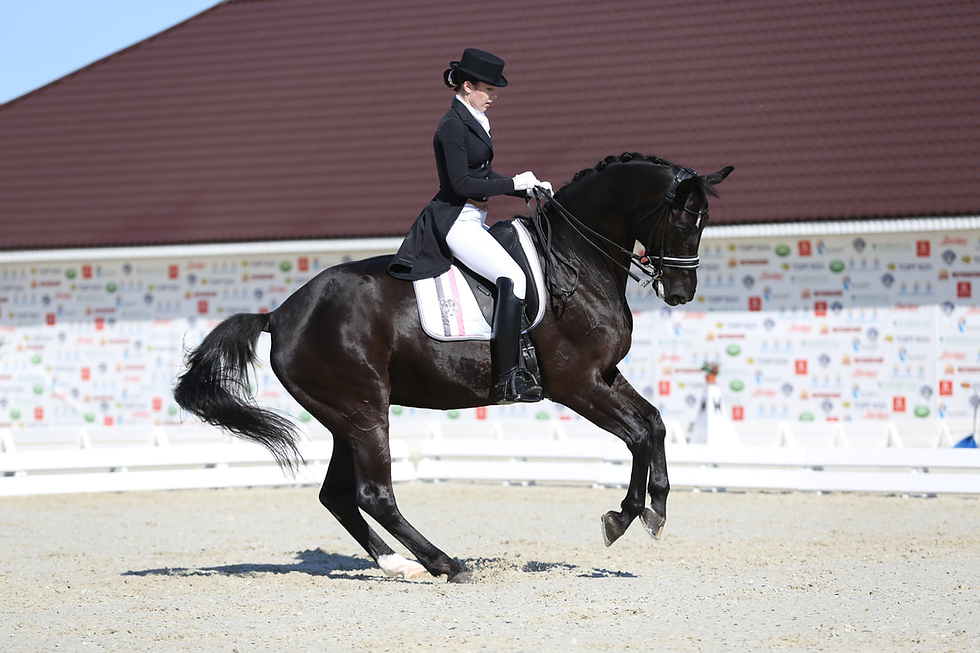How Can I Tell If My Horse Is Injured?
- First Choice Equine

- Jun 5, 2023
- 4 min read

As a horse owner, it is crucial to be able to recognize and address injuries promptly. Horses are magnificent creatures, but their size, strength, and activity levels can make them susceptible to injuries. Being able to identify signs of injury in your horse is essential to provide timely and appropriate care. In this comprehensive guide, we will discuss various indicators that can help you determine if your horse is injured, enabling you to take appropriate measures and seek veterinary assistance if necessary.
Observing Changes in Behavior:
Horses are known for their stoic nature, which often makes it challenging to identify injuries by their behavior alone. However, keen observation of changes in behavior can offer valuable clues. Look for the following signs:
a) Limping or Lameness: Uneven gait, favoring one leg over the others, or reluctance to put weight on a specific limb indicates a potential injury. Observe your horse's movement at various gaits to identify any irregularities.
b) Altered Appetite and Water Consumption: Horses in pain or discomfort may exhibit changes in their eating and drinking habits. A sudden decrease in appetite or increased water consumption could indicate an underlying issue.
c) Agitation or Depression: Horses in pain may display changes in temperament, such as increased irritability, aggression, or withdrawal. Monitor their behavior during handling, grooming, or social interactions for any unusual reactions.
Physical Examination:
Conducting a thorough physical examination is crucial to detect any visible signs of injury. Remember, always prioritize your safety and approach your horse with caution. Consider the following:
a) Swelling or Heat: Palpate your horse's body, limbs, and joints for any signs of swelling, heat, or abnormal sensitivity. Swelling is often an indicator of inflammation or trauma.
b) Cuts, Abrasions, or Lacerations: Inspect your horse's body, legs, and hooves for any open wounds or visible signs of trauma. Minor cuts and abrasions may not require immediate veterinary attention, but deeper wounds should be addressed promptly.
c) Changes in Vital Signs: Monitor your horse's vital signs regularly. An elevated heart rate, increased respiratory rate, or elevated temperature may indicate pain or stress associated with an injury.
Assessing Movement and Performance:
Observing your horse's movement and performance is essential to identify any subtle changes that may indicate an injury. Pay attention to the following:
a) Stiffness or Resistance: Observe your horse during exercise or turnout. Reluctance to perform certain movements, stiffness, or resistance to specific cues may suggest an underlying injury or discomfort.
b) Decreased Performance: If your horse's performance declines without any apparent reason, it could be a sign of an injury. Changes in jumping ability, reduced stride length, or difficulty maintaining a consistent gait warrant further investigation.
c) Behavioral Changes during Exercise: Notice any behavioral changes during riding sessions, such as bucking, refusing jumps, or head tossing. These signs may indicate pain or discomfort.
Monitoring Hoof Health:
The condition of your horse's hooves can provide valuable insights into their overall well-being and potential injuries. Consider the following:
a) Uneven Shoe Wear: Regularly inspect your horse's hooves for signs of uneven wear on the shoes. Uneven wear patterns could suggest lameness or musculoskeletal imbalances.
b) Hoof Sensitivity: Hoof sensitivity, evidenced by your horse flinching or showing discomfort when pressure is applied, may indicate issues such as bruising, abscesses, or laminitis.
c) Heat or Pulse in the Hoof: Excessive heat or an increased digital pulse in the hooves could indicate conditions such as inflammation, infection, or laminitis. Regularly feel the hooves for any abnormal warmth or a pounding pulse.
Behavioral Changes in the Stable:
Injuries can also manifest in changes in your horse's behavior within the stable environment. Consider the following:
a) Difficulty lying down or getting up: If your horse is having difficulty lying down or getting up, it could be a sign of pain or discomfort, potentially indicating an injury.
b) Reluctance to move or turn: Notice if your horse seems hesitant to move or turn in the stall. This could suggest discomfort in the limbs, back, or neck.
c) Changes in lying or standing posture: Pay attention to any changes in your horse's lying or standing posture. Persistent shifting of weight, standing with legs stretched out, or assuming an unusual stance may indicate discomfort or injury.
Seeking Veterinary Assessment:
While you can gather valuable information through observation, it is essential to involve a veterinarian for a professional evaluation. A qualified equine veterinarian can perform a comprehensive examination, utilize diagnostic tools such as X-rays or ultrasounds, and provide accurate diagnoses and treatment options.
Recognizing and Responding to Horse Injuries
Being able to recognize signs of injury in your horse is paramount to their well-being and long-term health. By closely observing your horse's behavior, conducting thorough physical examinations, monitoring movement and performance, assessing hoof health, and noting behavioral changes in the stable, you can identify potential injuries early on and seek appropriate veterinary assistance. Remember, when in doubt, it is always best to consult with a veterinarian who can provide a definitive diagnosis and recommend the most suitable treatment plan for your injured horse. By prioritizing your horse's health and well-being, you can ensure they receive the necessary care and support for a speedy recovery.
#Horseinjuries #Recognizinghorseinjuries #Signsofhorseinjury #Horsebehaviorchanges #Lamenessinhorses #Horsephysicalexamination #Swellingandheatinhorses #Horsewoundsandlacerations #Hoofhealthinhorses #Horseperformancedecline #Hoofsensitivityinhorses #Horsestablebehaviorchanges #Veterinaryassessmentforhorseinjuries #Earlydetectionofhorseinjuries #Equinehealthandwell-being
%20(1).png)



Comments